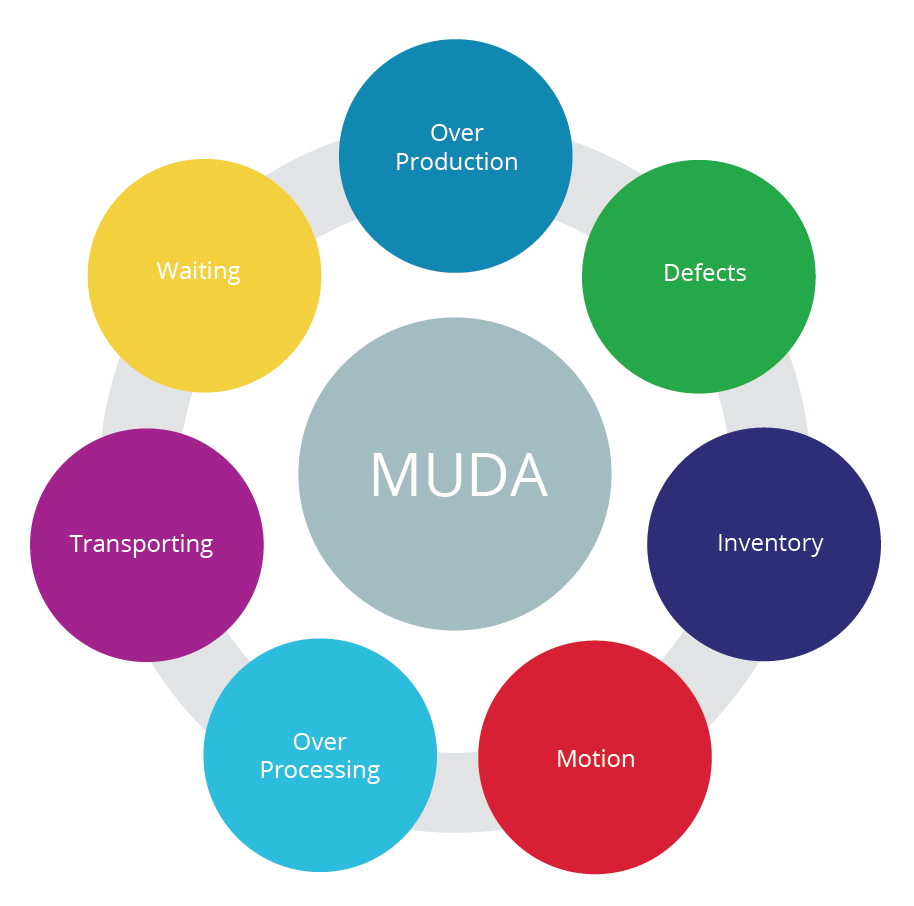In my previous blog, on this topic, I referred to “The Machine that Changed the World” and took some insights from the book by the same name which was based upon the first “study” of Lean. Unfortunately, automation can result in massive waste built into the factory if it is not removed up front.
In this blog, I will take this a bit further and introduce the concept of “Lean Thinking”.
Firstly, I must concede that westernized “Lean Thinking” is a great disappointment. Out came the book with that name, and I, like many others dived into it expecting answers. Instead, we found a number of high-level concepts without any meat on them, the supposed 5 principles of Lean:
- Value – identify all of the value-adding functionality in your product (from the customer’s point of view, not yours)
- The Value Stream – put all of the value adding steps alongside each other and remove the non-value-adding steps
- Flow – by shortening the value chain, value begins to flow and gains velocity along the value chain
- Pull – get the customer to pull the product and only manufacture to replenish the warehouse
- Perfection – start again and relook at the processes
Having become very passionate about Lean, I really started embracing the concepts and studying as much as I could. This led to some stark realizations, in particular, that Lean is brilliant, but one size does not fit all – the Lean programme must become your lean programme developed for your machines and your workforce. In summary:
Value
- Most companies are really not in touch with their markets. They claim to know their customers yet do not know how their customers define value in their purchases. So how did they define the customer’s value proposition?
The Value Stream
- None of the bigger factories I have worked in (or consulted to), would allow a physical change to the layout to remove waste and put the value-adding activities next to each other. Just a word of caution here, if you do not remove the non-value-adding activities from the shop floor entirely, after a short period of time they will reappear on the shop floor. The new layout must prevent the opportunity to resurrect those old practices, otherwise, the organization is quickly back to the beginning!
Lean makes reference to muda, mura, and muri:
- Muda is a Japanese on’yomi word meaning “futility; uselessness; wastefulness”, and refers to the 7 wastes, all identifying different aspects of the production cycle that rob capacity and resources from the value-add to the customer.

- Mura is a Japanese word meaning “unevenness; irregularity; lack of uniformity; non-uniformity; inequality”
- Muri is a Japanese word meaning “unreasonableness; impossible; beyond one’s power; too difficult; by force; perforce; forcibly; compulsorily; excessiveness; immoderation”
- Where to Start:
- Firstly, it is clear that the war on waste is never won – it must go on as it is free money for the organization. To find the waste, and remember, we are looking for the 7 wastes, as well as the variants of Muda, Mura, and Muri:
- A good understanding of the factory is required – what happens inside at an operational level. Factories are full of legacy processes and Spanish customs – these need to be identified and dealt with in the appropriate forum
- The factory processes must be carefully mapped and documented before beginning any of these initiatives can begin. Typically, a team from the Lean Office should be assigned to map the processes. Independent from the legacy issues, focussing relentlessly on just the process and the value adding steps
- Once that process is underway, the hidden factory will be discovered. It can then be dismantled! Usually, there are a number of quick wins here, simple issues that create defects and waste money.
Flow, Pull, Perfection
Flow:
- Once the value-adding activities are put alongside one another, the value will begin to flow.
- A number of simple tricks exist that will create flow, things like simple conveyors that will join two machines together, removing the extra handling.
Pull:
- Here we look to create Pull and reduce overproduction – sell one, make one.
- To achieve this, the factory must be stable and predictable. Only once the predictability exists can the stockholding be systematically reduced. A rapid stock reduction with an unpredictable factory is commercial suicide.
Perfection:
- If you think you have it, start again and relook at the factory!
At this point, we are still just getting a handle on the factory. There will be a number of blogs on this topic as it is very do-able, but an experienced guide is required.






